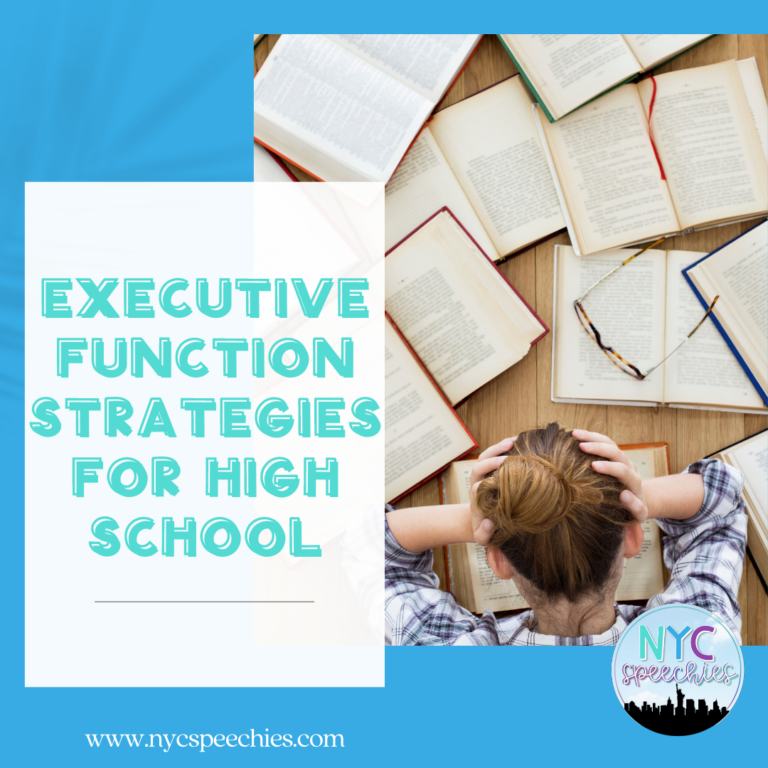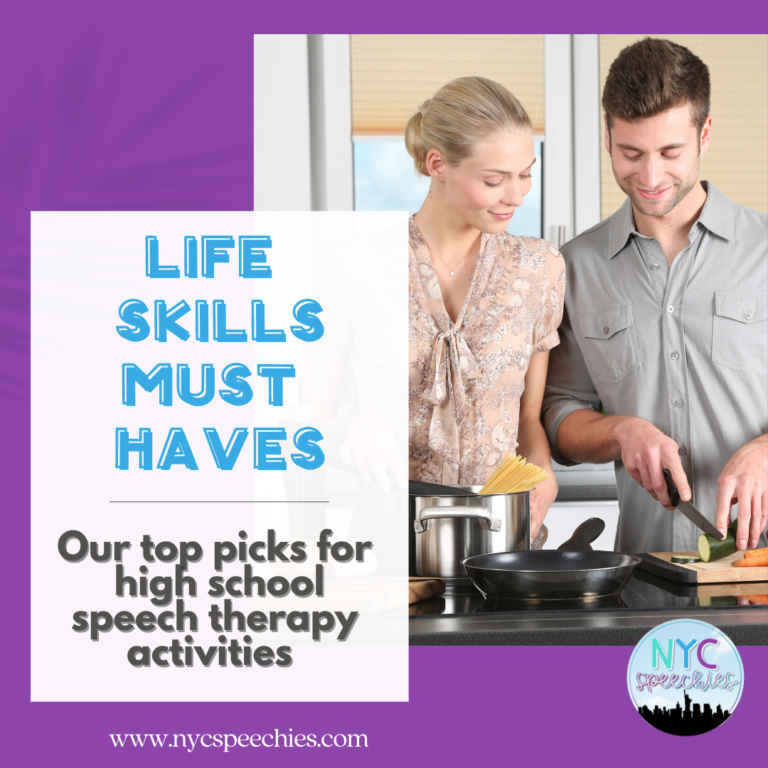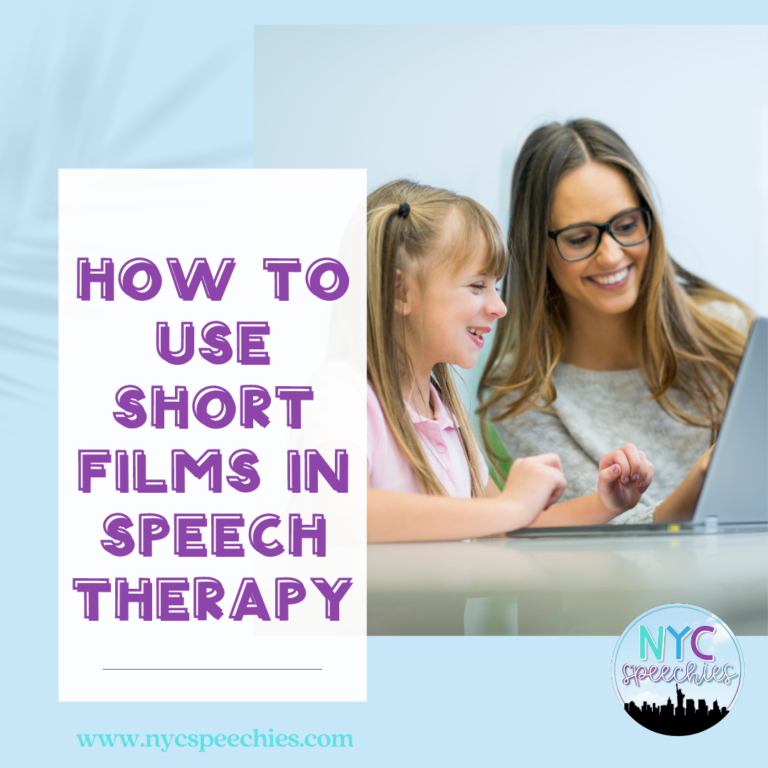Let’s Talk: The Importance of Oral Language

When you think of a high school setting, most people think of a classroom with individual desks and students sitting in rows. That same visual includes a teacher in the front of the classroom lecturing and maybe even writing notes on the board. It is safe to say that most students spend their days sitting at their desks and listening to their teachers. When they talk out of turn in class, the teacher is usually annoyed. Now, we can’t blame the teachers for getting annoyed. They have more than 5 students in their classroom and if every student started talking, they would never get through a lesson. Honestly, that’s one of the reasons why we opted to not be classroom teachers and prefer working with small groups of students. We love giving our students the opportunity to share and ask questions without having to raise their hands.
When students walk into our therapy room, we always greet them with, “How has your day been going?” or “How was your weekend?” In full disclosure, often the responses we get are less than ideal, especially since the purpose of asking these questions is to spark back and forth conversation with our students. Most of the time our students tell us they did nothing over the weekend and/or they are still really tired. We are then faced with the challenge of either accepting those empty responses or trying to gauge if they could try and provide us with more details about their day or weekend. Who are we kidding, we are Speech and Language Pathologists! Of course we do not accept those initial answers and instantly ask follow-up questions to get more detailed responses.
Now, we know we can’t just chit-chat the entire session, even when we have some students requesting, “Can’t we just talk today?” All of our students have annual Individualized Education Plan (IEP) goals that relate to receptive, expressive, and/or pragmatic language. We can all agree those are the three main areas of speech and language development. So how do we incorporate conversations into our sessions while still targeting our students’ speech and language goals? Think about one foundational skill that receptive, expressive, and pragmatic language all have in common.
We know the foundational skill; Oral Language. Keep reading to learn more about the benefits of integrating Oral Language into your daily therapy.
4 Benefits of Oral Language
- Promoting Auditory Memory: This skill is needed in order to process, remember, and/or recall information.
- Developing Listening and Speaking Skills: Listening requires a student to focus their attention on the speaker to hear and understand what the speaker is saying.
- Language Rich Environments: A learning space designed to provide students with frequent opportunities to use language, interact, and encourage turn-taking.
- Expanding Vocabulary Knowledge: A large vocabulary has a direct correlation to school achievement.
As you can see, starting your therapy with a focus on Oral Language will make all the difference. The 4 Components you just read about directly link back to receptive language, expressive language, and/or pragmatic language. Take a minute, think about your current therapy approach, how can you make an adjustment to include more activities and strategies that include oral language?
Below we share more about the strategies we love using with our own students on the daily.
Roles in a Conversation
This has become the first strategy we introduce to our new students. Participants in a conversation can be categorized into 6 different ‘Roles’ with easy to remember titles:
- Instigator: The person who begins the conversation
- Builder: The person building on and developing other people’s responses
- Challenger: The person who challenges or argues against
- Clarifier: The person who clarifies or asks to make things more clear
- Prober: The person who asks questions to go deeper into responses
- Summarizer: The person who summarizes and makes judgments
We utilize different visuals (Cube It!, Put a Ring On It, Poster, etc) to help students take on different roles throughout a conversation. Whenever you target a conversation activity, have the students pick topics of high interest. Then give them a chance to research some information so they can feel better prepared throughout the conversation. The idea is to give them opportunities to take on different roles during a structured conversation, so they can then generalize this strategy into a classroom environment.
Accountable Talk
Another approach to introduce oral language is through the strategy of ‘Accountable Talk.’ This strategy has 9 different categories:
- Affirm: When you state a new opinion
- Agree: When you have the same opinion about something
- Disagree: When you have a different opinion about something
- Extension: When you add on to what someone has said
- Clarify: When you are asked to make a statement less confusing and more clear
- Inquire: When you ask for more information
- Connection: When you make a connection to something someone said
- Refer: When you refer back to a text to support your response
- Summarize: When you give a brief statement of the main points
Some of these categories are less obvious in what is expected of the student so you can utilize more sentence starters with this strategy. We have found that the students prefer the support of sentence starters especially when they have them listed in front of them during a conversation/discussion. When you practice this strategy, have the students pick high interest topics to discuss because you need them to have a higher ‘buy-in’ so they are more willing to actively participate. To say we have learned a great deal about video games is an understatement! Who knew you could talk so much about the differences between Xbox and Playstation?!
See, Think, Wonder
The last strategy we recommend for oral language is ‘See, Think, Wonder.’ This becomes more of a bridge between oral language and written language when we use it with our students. This strategy allows students the opportunity to analyze images and then utilize oral language to share what they observed and analyzed. When using this strategy you have the student look at a given image and answer the following questions:
- See: When looking at the image, what do you observe?
- Think: What do you think is going on in this image?
- Wonder: After looking at the image, what questions do you have?
They take the time to write down their observations and inferences prior to sharing with the other group members. The students are still expected to share out orally, but there is less of a focus on a discussion and more of a focus on taking their written responses and turning them into oral responses. Sometimes students end up having a discussion/conversation because they agree or disagree on what they infer from the image (not too secretly, that is always our hope when we have them complete an I See, I Think, I Wonder activity).
We continue to prioritize oral language and have seen the benefits as it relates to our students’ receptive, expressive, and pragmatic language.
Now that we have increased your motivation to include oral language, how do you plan to incorporate it into your daily sessions?









